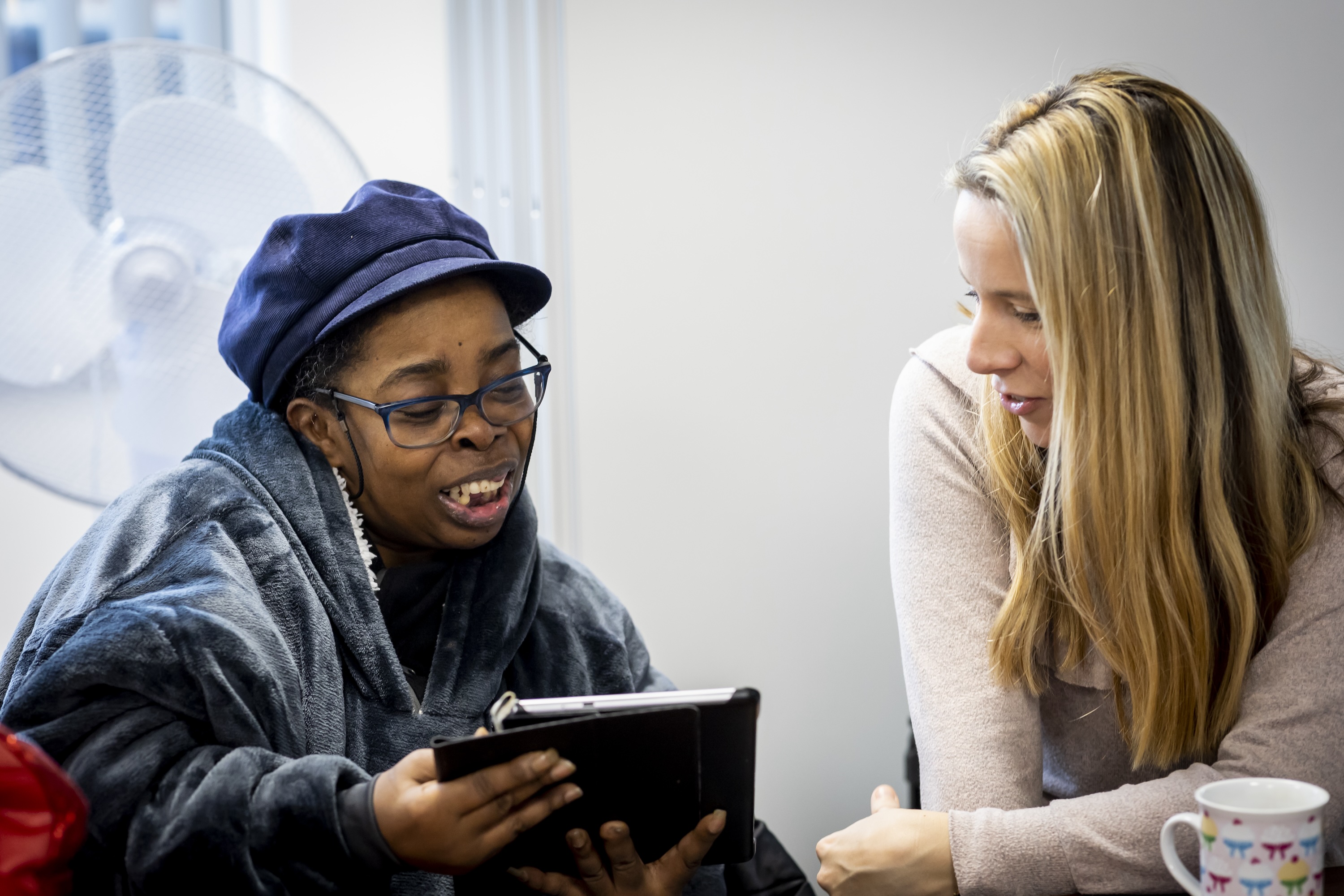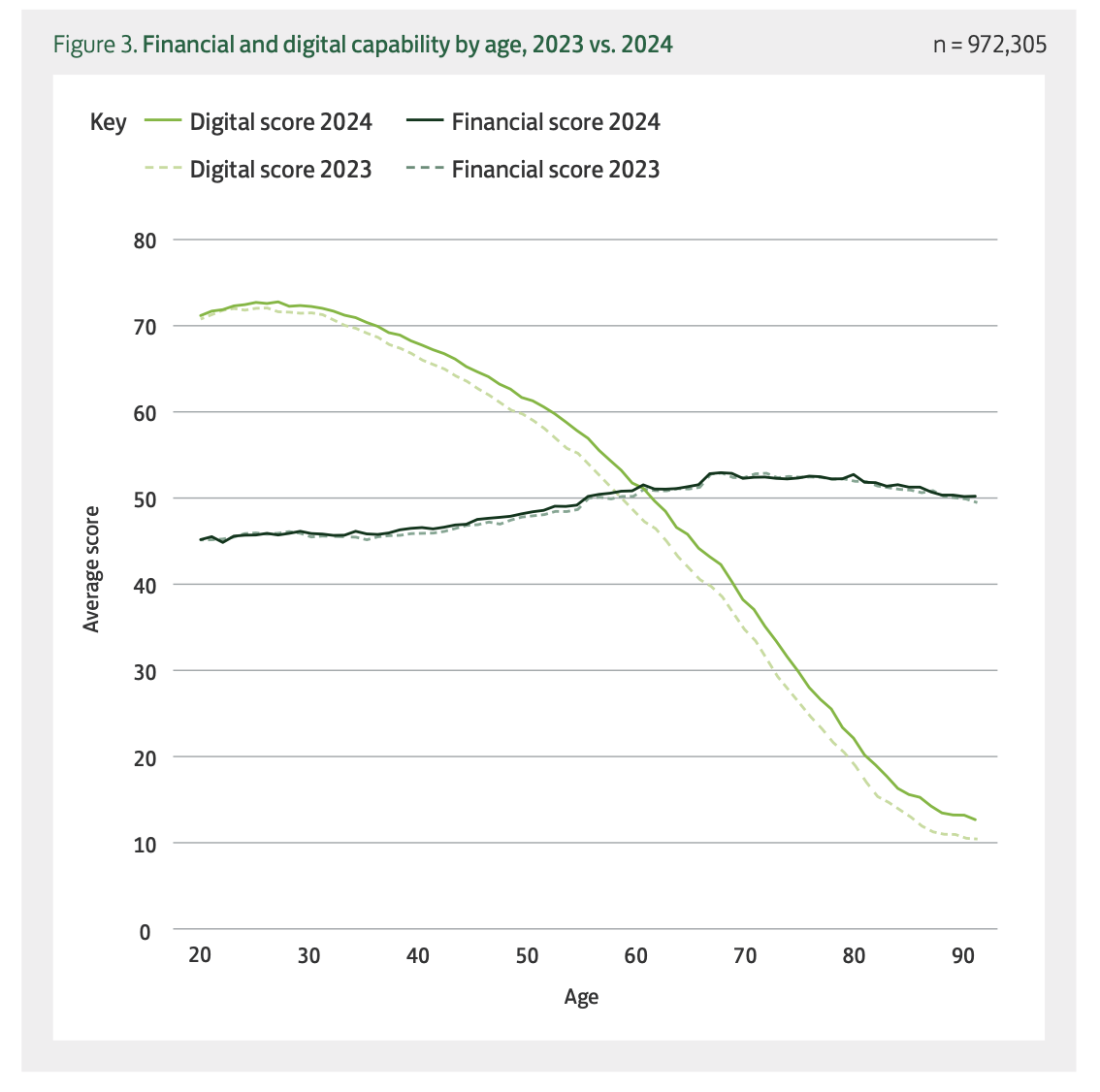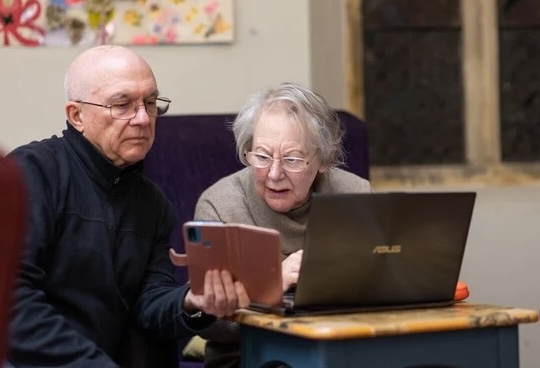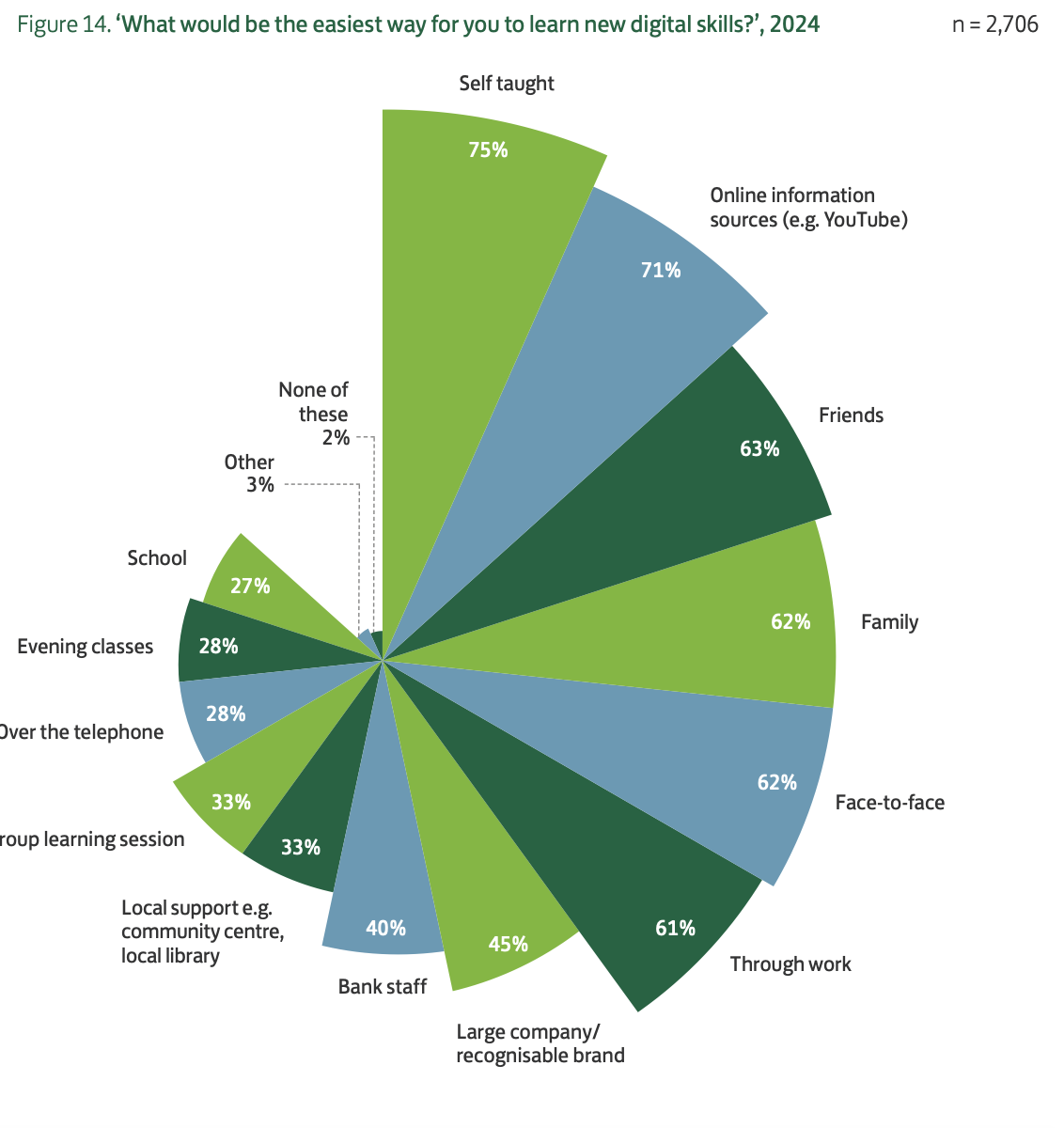Who's got digital skills...
There are 4 bands and encouragingly 67% of us are in the "high" or "very high" digital skills bands. But....
The lower bands:
- 23% of us have "very low" digital skills (12.1m)
- 3% are offline completely (1.6m)
- 9% of us have "low" digital skills (4.7m)
Compared to the highest band the lowest is:
- Less confident online (60% vs 94%)
- Less likely to engage with their finances digitally (6.7% vs 100%)
- More likely to be scammed (8.5% vs 4.6%)
- Less likely to shop around for cheaper deals (60% vs 85%)
As ever, the main determinant of skills is age. The younger you are, the better your digital skills are. There's been encouraging take-up of digital skills in the over 70s. But nearly 90% of the lowest band are over 50. And 23% of 70-79 year olds aren't online.
Online engagement begins to dip in the 40-49 age cohort and confidence starts to wane. This is a group that has grown up with computers, reinforcing the idea that digital capability is not static. The pace of technological change means people's skills can decline if not maintained.
Financial and digital capability
The report looks in detail at the overlap between these. The two don’t track exactly. Partly because both are closely linked to age, broadly the younger you are, the better your digital skills; the older you are, the better your financial capability (see the chart).
And it's difficult to untangle the links between digital and financial capability. For example, those offline are less likely to be able to cope with a financial shock for three months or more, but they’re also more likely to be retired or lack formal qualifications (which will impact earnings and savings). There are some clear benefits. If you compare the highest and lowest levels, those in the highest digital capability are more likely to..



